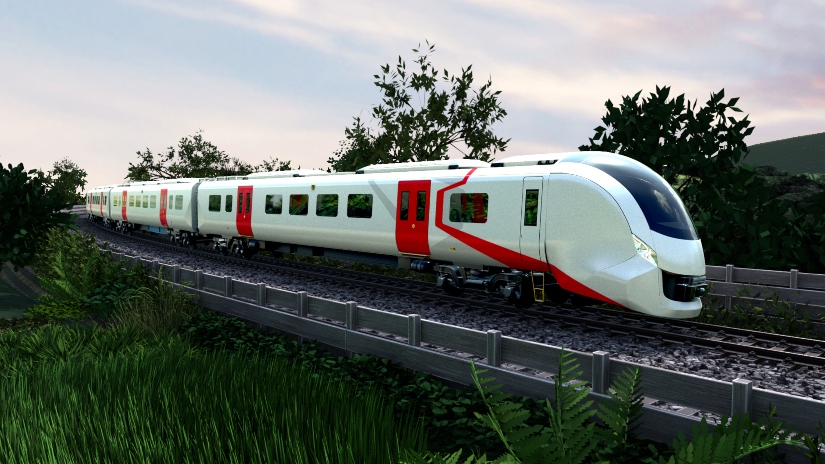The contents of this article were published in July 2021.
By Alistair Dormer, Executive Vice President and Executive Officer and Chief Environmental Officer, Hitachi, Ltd.; and Hicham Abdessamad, Chairman and CEO, Hitachi America, Ltd.
As the world confronts climate change, our collective response has the potential to forge a new, net-zero economy. Collaborative creation — with the public and private sectors working toward shared goals — is key to bring that potential to fruition.
Ambitious government initiatives such as President Biden’s American Jobs Plan create a public policy framework for making the massive infrastructure investments necessary to address climate change. But businesses must deliver the innovations necessary to close the significant gaps in key carbon-intensive sectors. Without a commitment to both sides of the equation, compelling climate-mitigation pilot projects cannot deploy at scale. Translating these ambitious climate targets into action in the United States will require collaboration between government and industry. By co-creating with leaders in the private and public sectors, Hitachi is bridging these gaps with novel climate change solutions that digitalize infrastructure, harness the power of data and create synergies across sectors.
Successful decarbonization hinges on technologies such as the Internet of Things (IoT), blockchain, artificial intelligence (AI) and big data. This is where Hitachi comes in. As a social innovation leader with deep expertise in operational technology, information technology and IoT, Hitachi is aiming to become a climate change innovator – bringing together its green technology and digital capacity to support cities, governments and companies cut carbon. The company is well-positioned to leverage the investments of the American Jobs Plan, having bridged infrastructure gaps with innovative solutions in areas such as rail, electric vehicles (EVs) and the power grid.
Rail. Cities and mass-transportation providers feel pressure from increasingly stringent carbon-reduction requirements to reduce emissions and adopt green technologies. Electrification is key to accomplishing this component of decarbonization, and Hitachi Rail is a global partner in that process. While there are no easy answers to the climate crisis, shifting travel modes from cars or planes to trains with these more efficient and affordable options offers the fastest way to impact decarbonization.
With its history of pioneering technologies and delivering full-service mobility solutions, Hitachi Rail is committed to contributing to a global transformation in transit. One model for this revolution is the rail system in Japan: Since Hitachi’s Shinkansen bullet trains entered service, trains replaced aircraft as the primary mode of domestic travel.
Conversely, older rail systems that rely on diesel engines are prime for modernization and low-carbon solutions. Among the emerging alternatives are battery technologies already operating in Japan, the U.K. and Italy. This innovation offers a way to fast-track reductions in carbon emissions in countries or regions whose rail infrastructure is not electrified, and it creates jobs for manufacture of batteries and charging stations, as well as operation and maintenance. In addition, trains can bolster the economy in urban centers by helping people get to their jobs and by connecting historically marginalized communities to new commercial opportunities.

Electric vehicles. Global sales projections show that electric buses, automobiles and light commercial vehicles will dominate the market within 15 years. This is not only an environmental game-changer but also an industry-changer: From charging systems and stations to automotive parts and fleet operation management, every aspect of the sector must align with this shift. By working together, government and industry leaders can turn this transformation into a significant economic opportunity in the form of new, green jobs across the industry.
Hitachi Astemo’s initiatives are helping to lead this infrastructure buildout, developing driving mechanisms for electric vehicles and helping modernize how the U.S. tackles fleet management. All of this supports a mobility ecosystem that is sustainable, connected and equitable.

Electrical Grids. Underlying each of these advances is a flexible, resilient power grid infrastructure. Demand for electricity is expected to double by 2050 as the world shifts its energy dependence from fossil-based resources to electricity produced by renewable power generation.
To meet these rapidly evolving needs, Hitachi Energy leverages its portfolio of power grids products, solutions, software and services to support the United States’ commitment to transition to low-carbon energy by 2035.
The next step, already underway, is to use AI and data generated by IoT to build a smarter and more reliable electrical grid and to automate and digitalize each element of the energy value chain. This is fundamental to bring clean energy to customers. The American Jobs Plan includes the creation of good-paying jobs deploying clean power generation resources, upgrading transmission and distribution infrastructure, and growing microgrid and energy storage solutions, as well as leveraging the potential of power plants retrofitted with green technologies.

These are just some examples of Hitachi’s commitment to powering good by helping the world reaching a net-zero future. Click here to learn more about how Hitachi is driving decarbonization and unlocking economic opportunity.
Executive Vice President and Executive Officer and Chief Environmental Officer, Hitachi, Ltd.
As of April 2021, as Chief Environmental Officer, Alistair Dormer is in charge of Environmental Strategy for Hitachi on a global level. He was appointed Representative Executive Officer in Hitachi, Ltd. leading the Mobility Sector in April 2019.
Alistair joined Hitachi in 2003 to establish Hitachi’s Rail business in Europe. He was promoted to CEO of Hitachi Rail Europe Ltd. in 2007 and having built a successful business in Europe was promoted to Senior Vice President and Executive Officer Group CEO, Rail Systems Business Unit Hitachi, Ltd. in April 2014, responsible for Hitachi’s global rail business. Under Dormer’s leadership, the Hitachi’s rail business has globalized and grown by more than 300%.
Chairman and CEO, Hitachi America, Ltd.
Hicham Abdessamad is a transformational leader, and a global business visionary with 20+ years of senior leadership experience. Prior to his current roles, he held multiple executive roles within Hitachi, including CEO of Hitachi Global Digital Holdings and President & CEO of Hitachi Consulting. Skilled at delivering industry-leading results in growth, profitability, and innovation, Hicham’s current role allows him to utilize his experience to lead Hitachi America in achieving it business growth objectives and driving the Global Social Innovation Business to execute on a mission of powering good while establishing new markets and next-generation digital business models that create environmental, social and economic value.